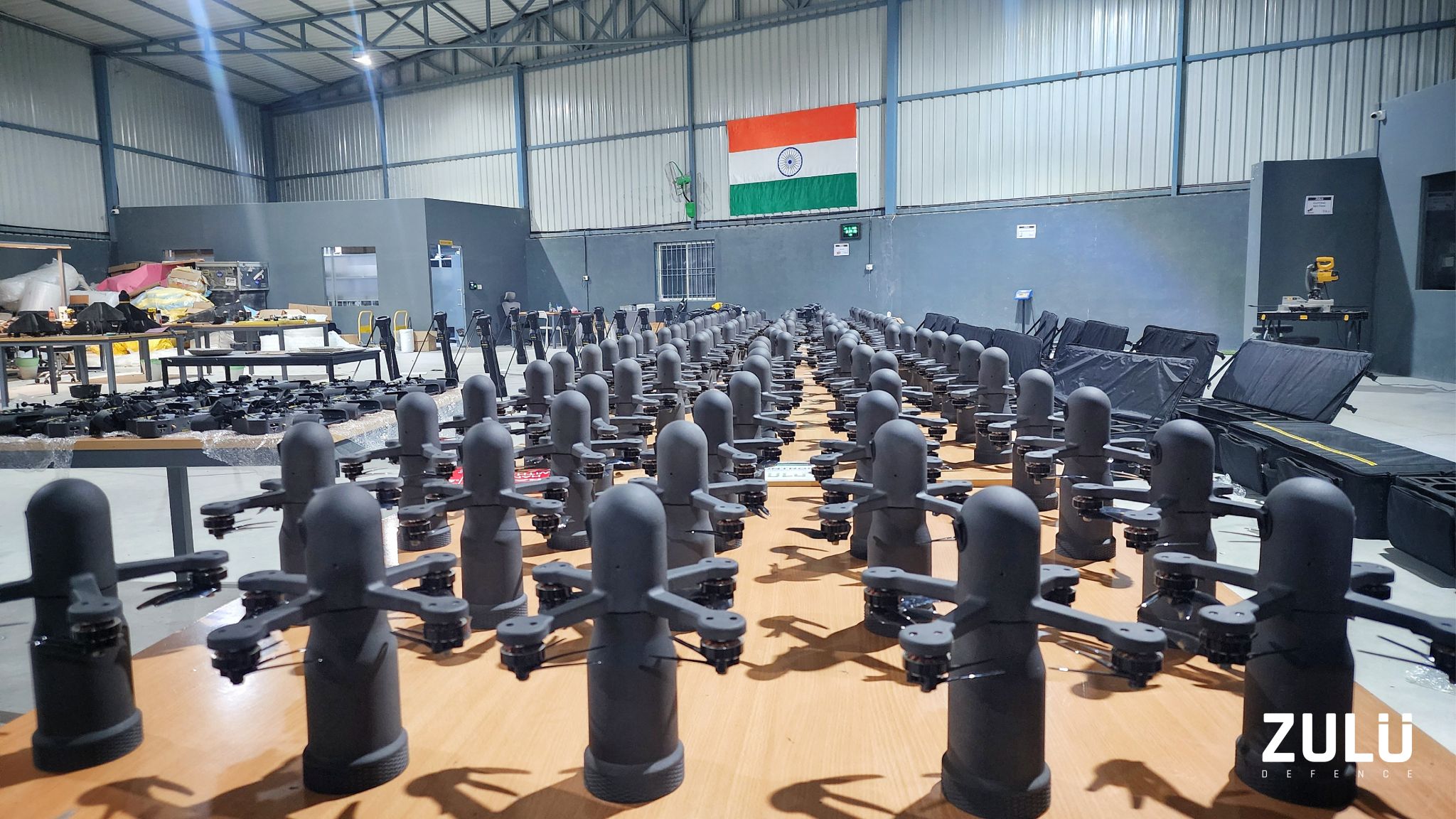Copyright defence-blog

India’s Bengaluru-based Zulu Defence Systems has released new images showing large-scale production of its updated HOVERBEE reconnaissance drones, signaling the company’s shift from prototype development to mass manufacturing. The drone, designed for military surveillance and rapid-response operations, has been showcased in production batches featuring over a dozen next-generation models lined up on an indoor assembly platform. “Battlefields are being revolutionized by ZULU's swarms of VTOL LM’s,” the company said in a statement accompanying the images. Zulu Defence is positioning the HOVERBEE as a flexible unmanned aerial platform optimized for tactical intelligence gathering in contested environments. According to the company, the palm-launched vertical takeoff and landing (VTOL) drone is designed for field deployment where mobility, stealth, and low logistical footprint are essential. The company describes the platform as “a breakthrough innovation in reconnaissance technology, offering advanced situational awareness in a compact and highly portable package.” The HOVERBEE can reportedly be deployed within seconds and retrieved without dedicated infrastructure, enabling use by small infantry units and special operations forces in environments where traditional ISR (intelligence, surveillance, reconnaissance) systems are either unavailable or impractical. With an emphasis on low visibility, the micro drone features a low acoustic signature and compact structure, making it harder to detect in frontline or urban combat zones. In a statement released earlier this year, company representatives said the drone had completed field evaluations with India’s elite Marine Commando Force (MARCOS) and elements of the Army’s ground combat units. According to Zulu Defence, the HOVERBEE demonstrated favorable results and was “recommended for acceptance into service.” Company engineers also revealed that the HOVERBEE airframe can be optionally converted into a loitering munition configuration. In this variant, the drone is equipped with a 400-gram grenade payload in place of its standard camera and sensor package. This kamikaze-style conversion follows a global trend in low-cost, dual-use unmanned systems, where reconnaissance drones are adapted to strike roles in high-density battlefields where fixed artillery or aircraft are limited. Zulu Defence did not disclose timelines for delivery or specific service branch customers but confirmed that the drone’s modular payload design was compatible with both ISR and precision-guided mission profiles. Zulu Defence has promoted the system as an effective solution for real-time intelligence in urban, forested, and mountainous areas, where line-of-sight and GPS signals are frequently disrupted. Weighing under one kilogram and equipped with a VTOL system, HOVERBEE can be operated by a single soldier using a ruggedized tablet or handheld controller. The drone’s flight system features autonomous hovering, obstacle avoidance, and encrypted video transmission, making it suitable for coordination with ground maneuver units or special reconnaissance detachments. Its ability to be stored in a backpack and redeployed in seconds allows units to maintain ISR coverage while on the move. The company also emphasizes HOVERBEE’s integration with command-and-control systems through its modular communications interface. The optional loitering munition version, currently in concept demonstration phase, would allow the drone to act as a precision-guided explosive platform targeting light vehicles, observation posts, or personnel in covered positions. Zulu Defence Systems has not confirmed whether the strike variant has entered live-fire testing or operational deployment but stated that interest from multiple units has been “strong.”



